Dry Skin on Feet – Best Moisturizers, Cures and Prevention
Disclosure: This page contains affiliate links, meaning we receive a commission if you decide to make a purchase through our links, but this is at no additional cost to you. Our recommendations are based on experience with and knowledge of these products, and we recommend them because they are genuinely helpful and useful, not because of the small commissions we may receive. Please don’t spend any money on these products unless you believe they will help you achieve your goals.
Foot moisturizers for dry skin can be one of the best treatments for treating and preventing dry heels and feet. Skin on the feet is thicker then skin elsewhere and requires specialized creams that can penetrate this thicker skin.
Moisturizing with an appropriate cream or lotion designed for thick skin on the bottoms of the feet can help dissolve callused skin and keep cracked heels or heels fissures from developing. There are several products that we regularly recommend to our patients that can cure or prevent dry skin. We discuss those products below.
Specialized Moisturizers for the Thick Skin of the Feet
To work best on the feet creams and lotions must include an acid or similar ingredient that can help the moisturizer penetrate the skin.
Urea Cream 40% with 2% Salacylic Acid: The best choice for dry skin on feet
The skin on the heels is 10x thicker than skin anywhere else on your body. The skin on the rest of the bottom of the foot is about 5x thicker. For this reason, normal moisturizers don’t work well on the bottom of the foot.
The most effective cream we have found for our patients contains 40% urea with 2% salacylic acid.
Directions – Standard: We recommend using Urea cream at bedtime following a bath, shower or soaking. The feet should be blotted dry with a towel and then the cream applied immediately. Rub gently until it is fully absorbed. Use every night for 2 – 3 weeks for best results.
Directions – Severe / Fissures: If you have severe dry skin or fissures, then follow the instructions above but 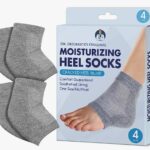 also cover your foot in an airtight sock overnight for the first week using the Urea cream. This “occlusive” covering will super-hydrate the skin. We recommend the use of a Gel therapy sock to lock moisture in without restricting circulation.
also cover your foot in an airtight sock overnight for the first week using the Urea cream. This “occlusive” covering will super-hydrate the skin. We recommend the use of a Gel therapy sock to lock moisture in without restricting circulation.
Remove Thick Skin and Callus Weekly for Best Results
For the Urea cream to best penetrate the skin to assist with healing you will need to remove as much of the thick and callused skin as you can. There are several methods to do this.
One of the easiest ways is to use an electric callus remover. We have tried several and highly recommend the Beurer Electric Pedicure Kit. This well-built  rotary grinder comes with bits that are specifically designed to grind away callus (it comes with bits for thick toenails too).
rotary grinder comes with bits that are specifically designed to grind away callus (it comes with bits for thick toenails too).
We recommend grinding the calluses with the Pedinova right after bathing when your feet are still a little damp. If it starts to feel warm, then stop for a few seconds and then start again. If it starts to get warm very quickly then you have gone far enough.
A less expensive option, although much more work, is a manual foot file. Our favorite is the Microplane Pedicure 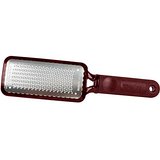 Rasp which can often be found for less than $10.
Rasp which can often be found for less than $10.
Creams and Lotions for Preventing Return of Dry Skin
Once your skin is in better shape you will not likely need a cream as strong as Urea 40% to maintain your now smooth skin,
You will, however, want to continue to apply a penetrating moisturizer at least daily and after every bath or shower to prevent the problem from returning.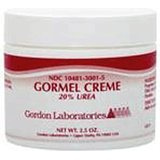
An excellent choice is simply to use a less concentrated Urea cream. We often recommend a 20% Urea cream used after every bath or shower. The Gormel 20% Urea cream is a respected brand that is well priced.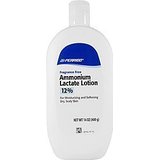
If you have very mild dryness or just an occasional flare-up, Urea is probably stronger than you need. In this situation we recommend Ammonium Lactate lotion. Amlactin is the best known brand but we recommend the generic Ammonium Lactate 12% lotion as it is the same formulation at significantly less cost.
What if the Dry Skin Continues?
There are many other conditions that can lead to dry skin so if you don’t see improvement within a couple weeks see your podiatrist, your primary care doctor or your dermatologist.
Other conditions that lead to dry skin on the feet include:
- Dermatitis: Dermatitis simply means “inflammation of the skin” and it can have many causes. It also can take on many appearances. Sometimes skin is red and swollen but sometimes it just appears dry and scaly. Dermatitis will not likely respond to moisturizers and is often treated with steroid cream.
- Athletes’s Foot: Athelete’s foot (or “tinea pedis”) is a fungal infection of the skin. Although it often itches it sometimes appears as only dry skin. Atheletes foot is usually treated successfully with topical anti-fungal medications. On the bottom portion of our Athlete’s Foot Treatment page you will find a list of home treatments that work for most people. If you don’t see improvement within two weeks you should see your podiatrist or dermatologist.
- Systemic Conditions: There are some systemic conditions that can cause an appearance of dry skin on the feet. There are many but good examples are psoriasis and eczema.
- Weather: Dry skin is more common in winter when humidity levels and temperature decrease. Many people find they only need to use the moisturizers in the winter.
- Harsh soaps and shampoos. Many soaps and shampoos remove moisture from your skin as they are designed to remove oil.
When used on a regular basis a foot cream should help the skin become rehydrated and healthy once again – as long as you simply have dry skin. If you don’t see improvement it is a sign that something else might be causing the problem.
If you have skin that does not respond to the moisturizing plan described above, and you are in the Seattle area, contact us for an appointment.
Click here for a complete list of products and foot creams for dry skin.
- Do I Have to Keep Wearing My Orthotics if My Feet Feel Better? - November 29, 2019
- Flip Flops and Sandals for Ball of Foot Pain | Podiatrist Recommended - August 5, 2018
- How To Strengthen the Arch of Foot - August 31, 2017

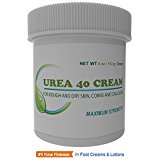
I must have lost or thrown out my tube of 30% urea cream which I start using almost automatically every fall – do I have to go to a dermatologist or can I now but the tube, even up to 40-45% at a large drug store chain in nyc.? merrelm83@gmail.com
You can get Urea 40% here: https://amzn.to/2gKA7TS